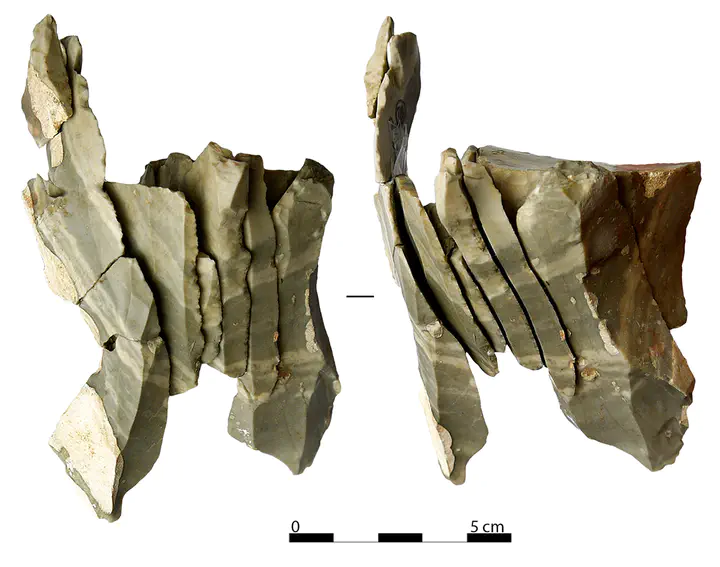A critical assessment of the Protoaurignacian lithic technology at Fumane Cave and its implications for the definition of the earliest Aurignacian

Abstract
In the scenario of the spread of the anatomically modern humans (AMHs) into Europe, the techno-complex known as Protoaurignacian is defined by the production of blades and bladelets within a single and continuous stone knapping sequence from the same core as the result of its progressive reduction. However, the growing re-evaluation of some assemblages is revealing that bladelets are frequently obtained from independent reduction sequences, hence discouraging the direct application of the model developed in southwestern France. High-resolution regional signatures are thus needed to reconstruct a more accurate portrait of the AMH colonization dynamic. Northeastern Italy, with the key site of Fumane Cave, is one among the regions of Mediterranean Europe worthy of consideration for reconstructing this colonization process and its cultural dynamics. Within the framework of a critical discussion of the technological definition of the Protoaurignacian and its relationship with contemporaneous industries on a regional and supra-regional scale, we present the results of a detailed analysis of the lithic technology from units A2-A1 based on reduction sequence and attribute analyses. Results show that bladelets are the first goal of production and they do not originate from reduced blade cores but from a broad range of independent and simultaneous core reduction strategies. One implication is that the most commonly used technological trait that is said to define the Protoaurignacian has been over-emphasized and that the Protoaurignacian is technologically consistent across its geographical extent. Additional data based on carinated core technology imply that this techno-complex shares a common technological background with the Early Aurignacian and that no features are restricted to one of the two facies. Furthermore, the major difference between the Protoaurignacian and Early Aurignacian appears to be more typological in nature, with retouched bladelets being less common in the Early Aurignacian.